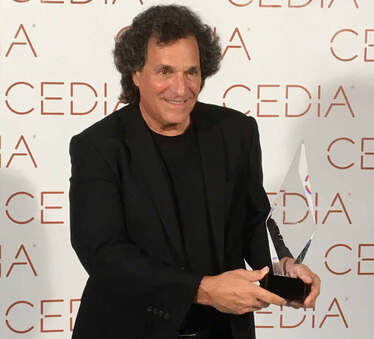 Joel Silver - ISF Founder, accepting the Lifetime Achievement Award from CEDIA in 2018 Joel Silver - ISF Founder, accepting the Lifetime Achievement Award from CEDIA in 2018 I started the ISF with a simple but radical idea at the time. I wanted to build a network of professionals that would adjust home TVs to accurately display the intent of creative artists and film directors. The initial focus was high-end residential integrators. Our success in that market was the result of meeting business owners with wonderful relationships with affluent clients. They were driven to install systems that would sound better and look better than anything their clients had ever seen before. We met most early ISF dealers through CEDIA and found many like-minded supporters there. Their clients saw vastly superior TV pictures and had the ability to afford them, and we were launched. We soon discovered volumes of manufacturer’s technical staff that understood what we were doing and would support our efforts. With them we were able to design TVs that could be easily calibrated in the field. That brought ISF features to millions of mainstream TVs. I never thought that could be possible for a radical idea. Studios were using consumer TVs as “client monitors”, and I soon found volumes of content creation professionals becoming ISF calibrators. That brought the concept full circle. There are now many thousands of professionals whose everyday work is faithful to the intent of artists and directors. -Joel Silver, Founder of the Imaging Science Foundation If you want to be a consumer electronics professional, where is your sphere of influence? Let’s explore the entire process. You will see where you fit in and how critical to the industry your role has become. The entire artistic process is a series of optical and electronic “Transfer Functions”. Think of a digital signal coming into your TV, and then light comes out. That’s one kind of transfer function. Let’s follow the steps that deliver the intent of the director to viewers.
We have accomplished much over the years, and I have personally been recognized, awarded and written about for years - that is certainly not the whole story. The untold story is the years of hard work of many other ISF instructors who have made this possible. I have not done this alone, and it is time many of them have been given a voice. This is the first of a year long series where you will here from some of the top calibrators working alongside ISF, we hope you enjoy. This month we will hear from Kevin Miller... 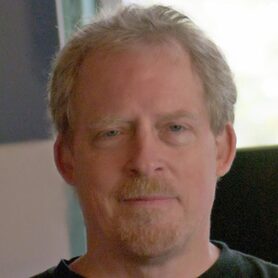 Kevin Miller - ISFTV Kevin Miller - ISFTV I was involved in the creation of the ISF with Joel Silver dating back to the spring of 1993 when working at The Perfect Vision as the Publisher and CEO. The idea that Joel so eloquently described was spawned over cocktails one evening at an InfoComm show in New Orleans. A little over a year later, in February of 1994, Joel launched his company with the first ever ISF seminar at the Waldorf Astoria hotel in New York City. I was at that seminar as a student with my Philips color analyzer in hand. I started my company, ISFTV, in February of 2001. Later that year, I co-instructed a seminar with Joel that followed the CEDIA show in Indianapolis. Day two of the seminar, as fate would have it, was on 9/11/2001. We had a very large group of nearly 60 students who were all quite shaken by the morning’s events. Our great friend Stu Kobak, who ran a DVD review web site of his own called Filmsondisc.com, got Joel on the phone and encouraged him to have us finish that seminar even in the face of the horrific events of that day. We did persevere and got the class to the finish line. Following that 2001 seminar, I spent many years co-instructing ISF seminars with Joel all over North America, which was a great learning experience. Joel helped launch my company as he has done for many small businesses all over the world. I am proud to have been a part of the creation of the Imaging Science Foundation, and continue to work closely with Joel and a number of talented technicians all over the country, furthering the goal of delivering the artist’s (Director’s) intent to consumer’s television screens. I have also been heavily involved for many years on the professional side of our industry, now supporting over 60 Post Production facilities with my professional calibration services and technical consulting in the New York Tri-state area. I have also been providing technical and product development consulting to TV and video source manufacturers since 2003. Kevin Miller ISFTV Email: [email protected] Web site: www.isftv.com
0 Comments
They say a craftsman is only as good as his tools, and that couldn't be more true when it comes to calibrating displays. The whole point of calibrating a display is to test it against a known standard with extreme precision and accuracy. In some cases (such as post-production) an inaccurate display can disrupt the workflow of the project. This ultimately costs time, money, and frustration amongst the people who are doing everything they can to finish the project on time.
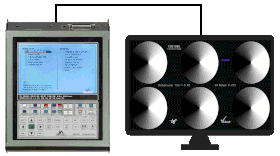 Today there are hundreds and hundreds of test patterns available to set up and calibrate displays. The SEVEN Generator is packed full of test patterns from the best in the business. We included patterns from ISF, Digital Video Solutions, the Professional Video Alliance, Spears and Munsil, Bill Wetzel, and some of our own Murideo patterns as well. You will never run out of test patterns with the SEVEN! If you have custom test patterns, reference images, or videos that you like to use, feel free to upload custom material with our Uploader Software.  Lip sync errors are painfully apparent in any A/V system. These issues have plagued integrators and calibrators for years, and until now, there has not been a calibration tool that allows you to measure lip sync. Now with the SEVEN Generator, you can not only calibrate the audio and the video but also easily measure for lip sync. These issues are hard to track down and are notorious for causing troubleshooting calls and truck rolls. Adding lip sync testing to your calibration ensures these issues don't show up after you leave the job site, and puts you ahead of your competitors. 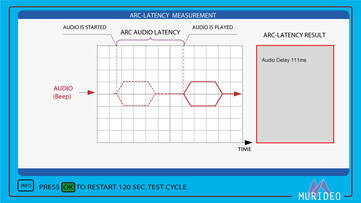 HFR (High Frame Rate) is right around the corner and will make video look smoother than we've ever seen before. Sports fans and gamers are very excited about this, and calibrators need to be able to set the display up correctly for this new, highly anticipated feature. The SEVEN comes stock with native 120fps video material, which makes testing for HFR a breeze. HFR, along with other features, is part of the brand new HDMI 2.1 spec. There is a lot of talk about HDMI 2.1 right now, and we are seeing products coming with these new high bandwidth connections. Not only does bandwidth increase to 48Gbps with HDMI 2.1, but it also comes with some pretty cool features like eARC. eARC provides much more bandwidth for audio to travel from a display back to an audio source such as an AVR or soundbar. This will allow for fully uncompressed audio, including Dolby Atmos, over the eARC channel which is something the industry has not seen before. As a calibrator, it will be essential to test for these signals to ensure that your customer is getting the highest possible quality audio signal for their system. Easily use the Seven Generator to test for these signals and configure the audio in your customer's system the best way possible. 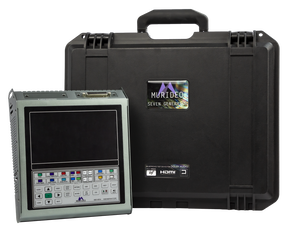 Speaking of HDMI 2.1, the SEVEN was built with this new standard in mind. It will come stock with an HDMI 2.0 output, and once available, you will be able to send in your unit and Murideo can upgrade it to HDMI 2.1. Again, something that's the first of its kind and only available from Murideo. This generator is packed full of features that will make a calibrator's life much easier. This highly advanced tool will ensure that your jobs are completed efficiently and at the highest possible level of quality. Increase customer satisfaction and outshine your competition! For more information visit murideo.com or give us a call at 605.330.8491. |
Third Party Reviews & Articles
SIX-G Generator
Archives
July 2024
Categories |
|
|
© Copyright 2015-2023
Home Contact Us About Us Careers Warranty 2222 E 52nd Street North, Suite 101, Sioux Falls SD 57104 +1 605-330-8491 [email protected] |





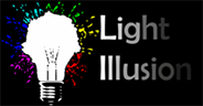

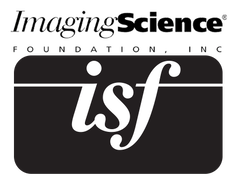




 RSS Feed
RSS Feed